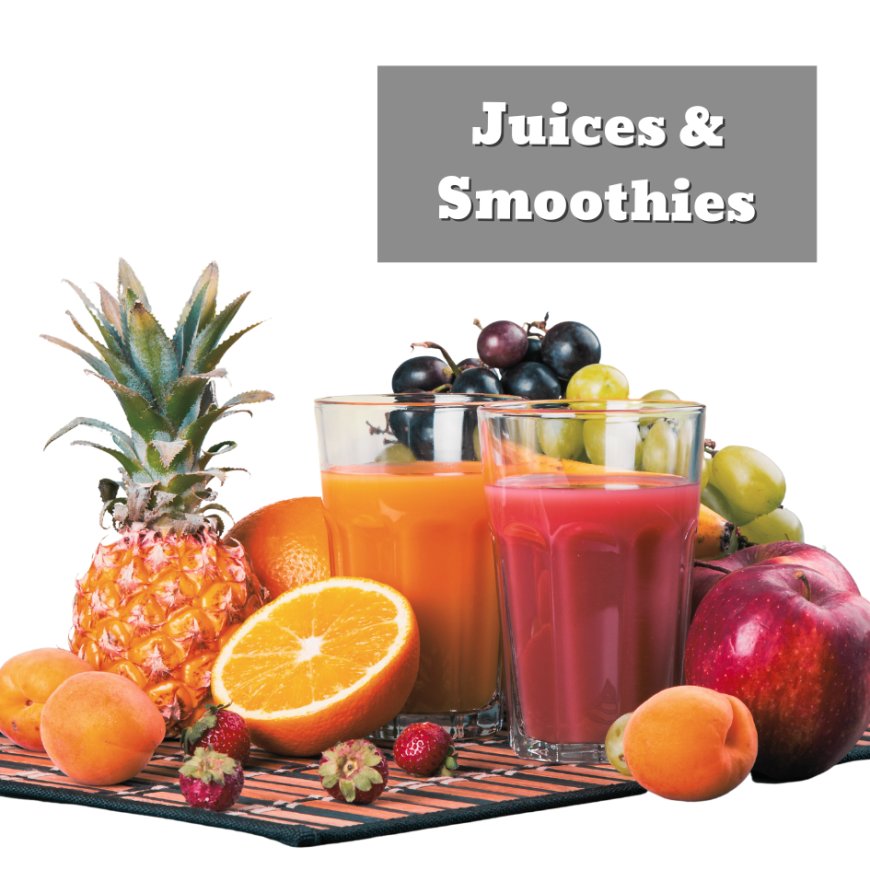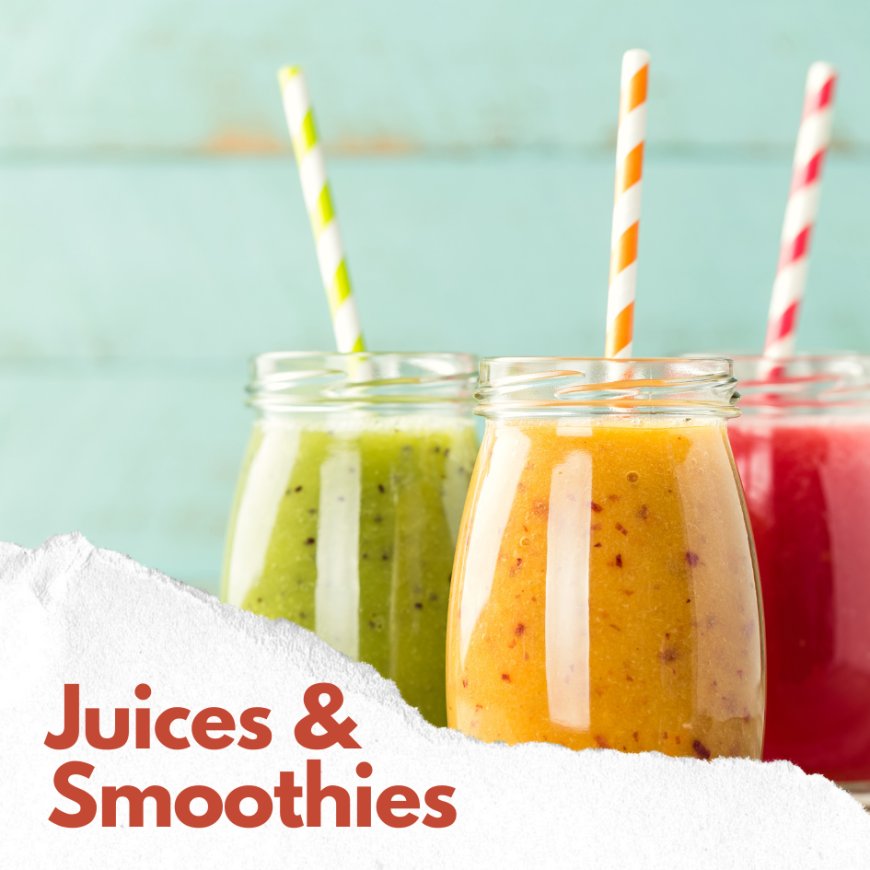What's the Role of Juices and Smoothies In A Balanced Diet?
Juices and smoothies are increasingly becoming popular for boosting the daily fruit and nutrient intake in our diets. They are considered the most refreshing and healthiest beverages after water. But with so much information, it's easy to get lost in the fuss about juicing and smoothie blending.
In this guide, we'll discuss the advantages of juices versus the benefits of smoothies. Equipping you with adequate knowledge to make informed choices that fit your needs.
What are juices and smoothies?
Both juices and smoothies are made from mechanical processes where fruits and vegetables are converted to liquid for easy ingestion. The following procedure is recommended to properly make healthy juices and smoothies.
- Thoroughly wash all the fruits and vegetables to be used in the juicing process.
- Peel them where necessary while removing the damaged and moldy parts
- Remove seeds and stones as necessary and cut fruits and vegetables into sizeable bits ready for blending.
How to make juices?
While juices and smoothies are considered healthy drinks, Juices are extracted from fruits and vegetables by squeezing and pressing. Consequently, Mechanical and electrical tools such as juice extractors and squeezers are used to extract the juice from fruits and vegetables.
That means you can combine different fruits and vegetables to form juice recipes, which are considered complete beverages with naturally occurring nutritional benefits. In addition, juices are also used as an ingredient in other food products and drinks, such as cocktails and marinades.
What are the benefits of juicing in the human body?
- High amounts of vitamins and antioxidants- juices enable the high intake of vitamins, minerals, and antioxidants that could otherwise not be possible while eating whole foods.
- Naturally occurring - Juices are naturally occurring drinks squeezed from raw, fresh vegetables. Their original flavours and distinct nutrients are well preserved, together with their potent healing capabilities.
- Easily absorbed- They lack the insoluble fibres found in whole foods, hence allowing for easy digestion and absorption of nutrients into the body.
- Natural purifiers and detoxifiers – juices are natural detoxifiers and blood purifiers ideal for eliminating body toxins and weight loss
- Better acceptance- juices from fruits and vegetables are well tolerated by the body systems than whole cooked vegetables, especially by the
How to make a smoothie?
Unlike juices, which are extracted from fruits and vegetables, smoothies are blended into a puree in a food liquidizer or blender. Fruits and vegetables are combined in wholesome cut into sizeable volumes and added to a blender. Then, a liquid base such as yoghurt and ice cubes is added and blended to achieve a thick shake-like consistency.
What are the benefits of smoothies?
- Has High fibre content- smoothies have high levels of fibre since they are made from whole vegetable foods and fruits. The high fibre content in smoothies ensures a laxative effect throughout the digestion process while promoting lower glucose absorption in the body. They are wholly satisfying and reduce appetite levels, which is a contributor to a high intake of calories and hence are considered beneficial during weight loss diet procedures.
- High levels of nutrients- smoothies are formed from a combination of naturally occurring ingredients, including vegetables, seeds and plant-based milks such as hazelnut milk. They are usually well-packed with nourishing nutrients to form complete diets and can possibly replace solid foods.
What are the disadvantages of juices and smoothies?
-
Risk of increased intake of glucose
sweetened juices and smoothies with added sugars may cause a sudden increase in blood glucose. High glucose levels in the blood can cause organ impairment, which has long-term effects and leads to cardiovascular complications. On the other hand, natural smoothies and juices without artificial added sweeteners are well-receptive and tolerated by diabetics. -
Exposure to higher intake of nitrates
Tubers, beetroot, and leafy vegetables such as spinach, which are used in making juices and smoothies, contains high proportions of nutrients. Their level increases significantly when in a non-organic farming set-up where chemical fertilizers are used in the process. Hence, it poses a threat to children under the age of 3. Although a high intake of nitrate-rich diets is not harmful to adults, it is recommended that children below this age range take less than 200g of spinach per day. -
Exposure to anticoagulants
Leafy vegetables such as cabbage and spinach, in general, contain vitamin K. Patients under treatment with sintrom and warfarin are advised to take smoothies and juices sparingly. These medications reduce the action of vitamin K; hence, patients are advised to seek guidance from professional doctors before engaging. -
Stomach discomforts
smoothies have a thick consistency nature. Therefore, they need to be diluted appropriately and consumed slowly to avoid stomach discomfort.
Now that you are fully aware of the benefits of juices and smoothies. It's time to incorporate them into your daily diet routine. Feel free to experiment with different types of fruits and vegetables. Be creative, pair them on your own terms, and let us know your favourite flavours in the comment section


